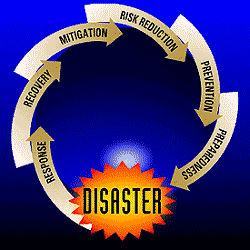I am struggling the past few days with writers block. In part I believe it is due to disorganization on my part which in turn causes me to think in several directions instead of staying focused. But this is my problem and I do not want to let my readers down by not continuing on with articles of value and content. So today I gladly share with you an article I found that speaks about a topic I enjoy, marketing. I hope this article will help you to avoid mistakes in your initiatives. Thanks to Robert, a subscriber of my newsletter, as well as a writer of quality content that I am pleased to share.
Carole DeJarnatt
Alliance Advisors, Inc.
7 Costly Small Business Marketing Mistakes to Avoid
Everybody makes mistakes and entrepreneurs are no exception. But for an entrepreneur with a limited budget, committing mistakes too often can be very costly. It is an open secret in the business world that most of the mistakes that can be committed in business have been committed; so why not just learn from them, saving you the agony of committing them yourself.
With that said, here are 7 costly small business marketing mistakes every entrepreneur must avoid:
1. An Incongruent Marketing Message
To effectively sell your product or service, your customer has to "get" the marketing message. A customer-centric marketing message educates your prospects and persuades them to become customers. Too many small businesses make the mistake of focusing their message on the product or company, instead of how the prospect would benefit by purchasing their product. Prepare the right marketing message with some of these in mind:
• Identify the prospect's problem.
• Explain to the prospect why the problem should be solved immediately and explain why your product or service is the right solution to their problems.
• List the benefits your prospects would enjoy upon purchasing your product and provide an unconditional guarantee to allay any fears they may have.
2. "Spray-and-Pray" Marketing Instead Of Precision Marketing
The days of marketing as a zero-sum game are over. You must demand accountability from your marketing efforts, expecting tangible results in the form of a healthy ROI (return on investment). Differentiate your marketing messages and target them to meet the specific needs and wants of your prospects and customers.
Many small businesses are guilty of the dreaded "spray-and-pray" marketing ideology, which inevitably drains their resources to the point where it very often leads to their demise.
Do not commit this same mistake, but instead practice precision marketing, where every aspect of your marketing and advertising efforts are measured and tracked for maximum returns.
3. Failing To Realize Marketing Is About Value CreationTo create a sustainable small business, you have to market something of value to the prospect and customer. Marketing is your business and creating value for your customers should permeate through all your marketing efforts. Strive to always over-deliver because customers love to receive more than they expect and the easiest way to do so is to develop a thorough understanding of their wants and desires.
4. Selling Instead Of EducatingYou must have heard about the age-old principle that "people love to buy but hate being sold to." It is a principle that will continue to hold true for ages to come, but unfortunately, many small businesses still fail to adhere to it. The fastest way to get rid of a prospect is to try forcing a sale out of him or her.
Education-based marketing, however, is a powerful marketing strategy to overcome this problem of being sold to. This strategy makes use of giving away valuable information, educating your prospect about the benefits of owning your product or using your service, offered to them as free reports, video cassettes, CDs, or DVDs in exchange for their contact information.
It is a strategy that builds trust with the prospects resulting in a much higher closing ratio. So, forget about throwing a sales pitch and try educating your prospects instead for a higher conversion rate.
5. Failing To TestThe biggest mistake any entrepreneur can make with their business is the failure to test every possible variable most important to their customers. This applies to both online and offline marketing efforts.
I can understand if small businesses faced more difficulty with market testing because of limited budgets years ago, but the Internet has done away with this excuse. It has become so cheap to conduct price tests and sales copy tests and identify what campaigns, keywords, and metrics give you the best ROI online that not testing any of these has become a cardinal sin.
6. Not Following Up With Prospects Or CustomersSmall businesses spend a great sum of money acquiring customers, which makes it all the more difficult to understand why many of them don't follow up with their customers, or even their prospects after the "front end" sale.
It has been well documented that true riches are to be found in the backend sales and the reason for this is simple. If a customer or prospect raises his or her hand to do business with you, it means an element of trust has been established and a business relationship is ready to be formed. They are more then likely to buy from you repeatedly if you make it a point to capture their contact information and develop a follow-up system for communicating with them frequently.
7. Selling To The Wrong Target MarketNever assume that your product or service will appeal to a general audience because this assumption has profoundly resulted in many small businesses shutting up shop. Large businesses are guilty of this too, but you can save yourself from committing such a rash mistake by asking yourself these two questions:
• Who are your customers, or who is your target market?
• Who will use your service, or who will buy your product?
Answer these questions with absolutely clarity and segment these markets by demographics and psychographics to zero in on your ideal customer. The time spent doing this correctly will add nicely to your bottom line.
Just remember that to succeed, you must be prepared to fail, so don't fear the eventual mistake but learn from it.
Robert Moment is an innovative small business coach , speaker and author. Robert specializes in teaching entrepreneurs how to start a small business that profits and grow. Visit
http://www.howtostartyoursmallbusiness.com/ and sign-up for the FREE Small Business Coaching 7 day e-course.



